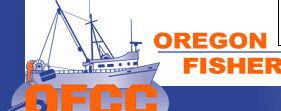 |
 |
 |
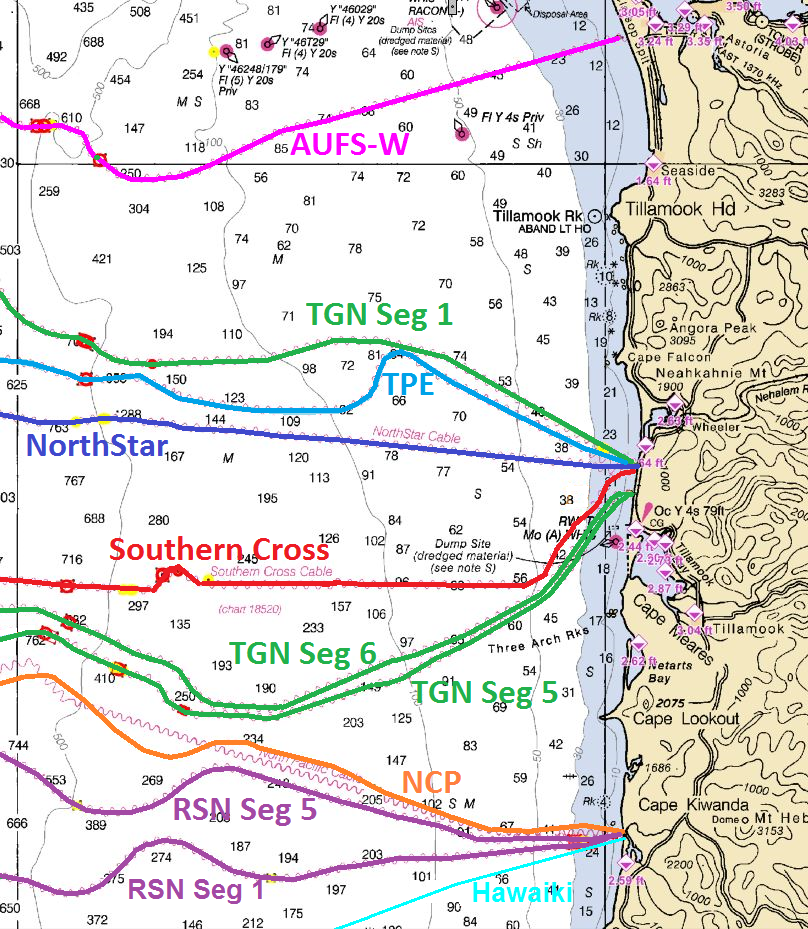
North Oregon Coast
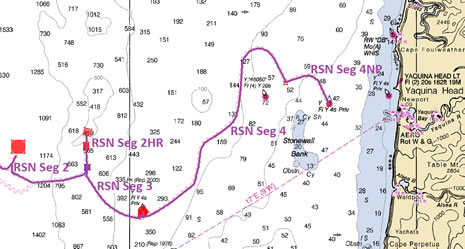
Central Oregon Coast
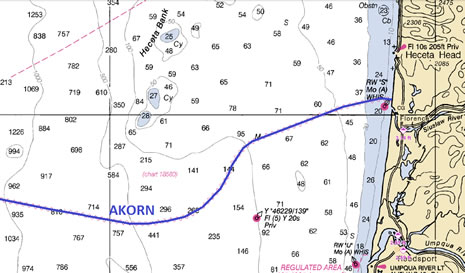
South Oregon Coast AKORN Cable
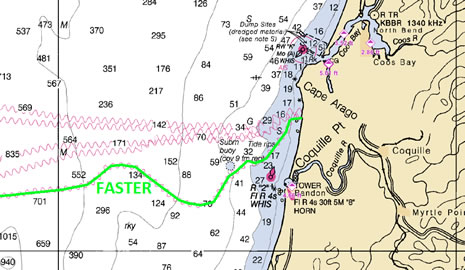
South Oregon Coast FASTER Cable
PLEASE NOTE; The AT&T Cables shown by squiggly lines on the South Coast are not covered under the terms of the OFCC agreement. The abandoned North Pacific Cable off Pacific City is likewise not covered under the OFCC agreement.
The OFCC cable routes are available as importable files for the following navigation software programs:
Coastal Explorer, Nobeltec Navigation, Maptech Offshore Navigator, P-Sea WindPlot, ECC Globe, and OLEX are available on thumb drives or by email free of charge to US West Coast Trawlers. Contact the OFCC office at staff@ofcc.com or (503) 325-2285. |
| |
Alaska NorthStar Cable
On July 9th, 1998, WCI Cable, Inc. entered into an historic
cooperative agreement with Oregon fishermen that outlines
the duties and responsibilities of each in relation to a fiber-optic
communications cable in the Pacific Ocean just north of Rockaway
Beach, Oregon.
Under the terms of that agreement, the Oregon Fishermen’s
Cable Committee had representatives aboard the cable ship
Maersk Fighter and the remote-operated vehicle ship
Kigoria.
Committee representatives observed nearly all phases of
cable laying and burial, on both the continental shelf and
slope out to approximately 820 fathoms water depth.
In 2008, Alaska Communications System Group, Inc. purchased
the NorthStar Cable to complement the AKORN Cable, which was
under construction.
Installation
Report- Charts
- Route Position
List
|
|
| |
|
| |
|
| |
|
| |
Southern Cross
Cable
The Southern Cross Cable Network, whose length is almost 32,500 km, was placed into service in November 2000. Originally designed to deliver 120 Gigabits per second of fully protected capacity, Southern Cross now has the potential to reach 1.2 Terabits per second (Tbps).
The Southern Cross Cable is the fastest, most direct connection from Australia, New Zealand, and Hawaii to the United States. The cable makes use of ACS Cable System's international cable landing station at Nedonna Beach, Oregon.
Further information is avaliable at www.southerncrosscables.com
Route
Position List
|
|
| |
|
| |
|
| |
|
| |
Tata TGN Pacific Cable System
The three Tata Global Network (TGN) cables landing in Oregon
make up a 'ring' of Tata transpacific cables which connect
Oregon to East Asia and Southern California. The TGN Pacific
system has 8 fiber pairs with a planned capacity of 7.68 terabits
per second -- roughly the capacity needed to transmit 700
million 1-page e-mails in one second. Transmission time between
Oregon and Japan is approximately 22 milliseconds. The TGN
network is part of a technologically advanced 90,000 km cable
system linking India, Asia, the Americas, and Europe. The
Oregon Fishermen's Cable Committee participated in the planning
of the Oregon shelf routes and had representatives aboard
cable installation vessels for each of the Oregon cable landings.
The cables are covered under the terms of a fishing agreement
between the owner and the Oregon Fishermen's Cable Committee.
Cable
Information - Charts
- Route Position
List
|
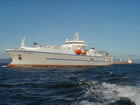 |
| |
|
| |
|
| |
|
| |
North Pacific Cable
A submarine fiber optic communication cable, called the North Pacific Cable (NPC), has been laid out of Pacific City, Oregon to arrive, after crossing over the continental shelf, at the North-South Interplain of the North Pacific Ocean, where it branches to terminate in Alaska and Japan. The cable is now out-of-service, unpowered and unlit.
PLEASE Note:
The North Pacific Cable is not covered
under the terms of the OFCC agreements
|
| |
|
| |
|
| |
|
| |
Alaska United Fiber System Cable
GCI's Alaska United fiber optic cable connects Anchorage,
Fairbanks and Juneau to Seattle, and it brings significant
telecommunication capacity to Alaska's growing Internet, video,
voice and data markets. Alaska United is a high-capacity,
diversely-routed, ring-protected fiber optic communication
network connecting Alaska's major population centers with
the lower 48 states. The network consists of three major sections:
1)AU-North, connecting Fairbanks and communities along
the southern pipeline corridor to the network. 2) AU-East,
connecting Anchorage, Juneau, and Seattle with landing sites
at Whittier, Lena Point and Lynnwood, WA., and 3) AU-West,
connecting Anchorage to Seattle with landing points in
Seward, AK and Warrenton, OR. The system utilizes optical
amplification allowing flexible capacity expansion through
the life of the system. The submarine portions were installed
with state-of-the-art burial and laying technique by industry
leaders. The cable is buried from the cable landing stations
to a water depth of over 800 fms., where possible to avoid
external aggressions.
|
| |
|
| |
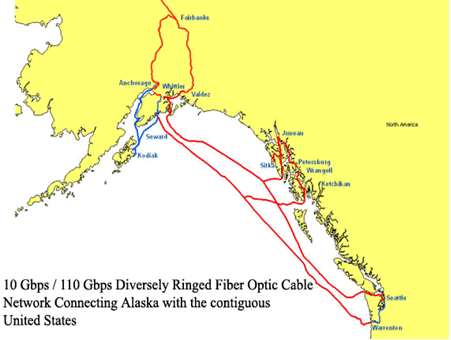
AKORN Cable
Alaska Communications Systems Group, Inc. (ACS) has completed
work on the Alaska Oregon Network (AKORN) cable project. This
submarine cable starts at Anchorage, Alaska and lands at Florence,
Oregon. Construction on the project began in 2007 and was
completed in the first quarter of 2009. The installation went
very well and is believed to be buried out to a depth of 727
fms. The cable's four fiber pairs triple Alaska's current
bandwidth and are managed by dual Network Operations Control
Centers in Alaska and the Lower 48 states. AKORN is tied into
existing terrestrial fiber routes to Portland and Seattle.
|
|
 |
